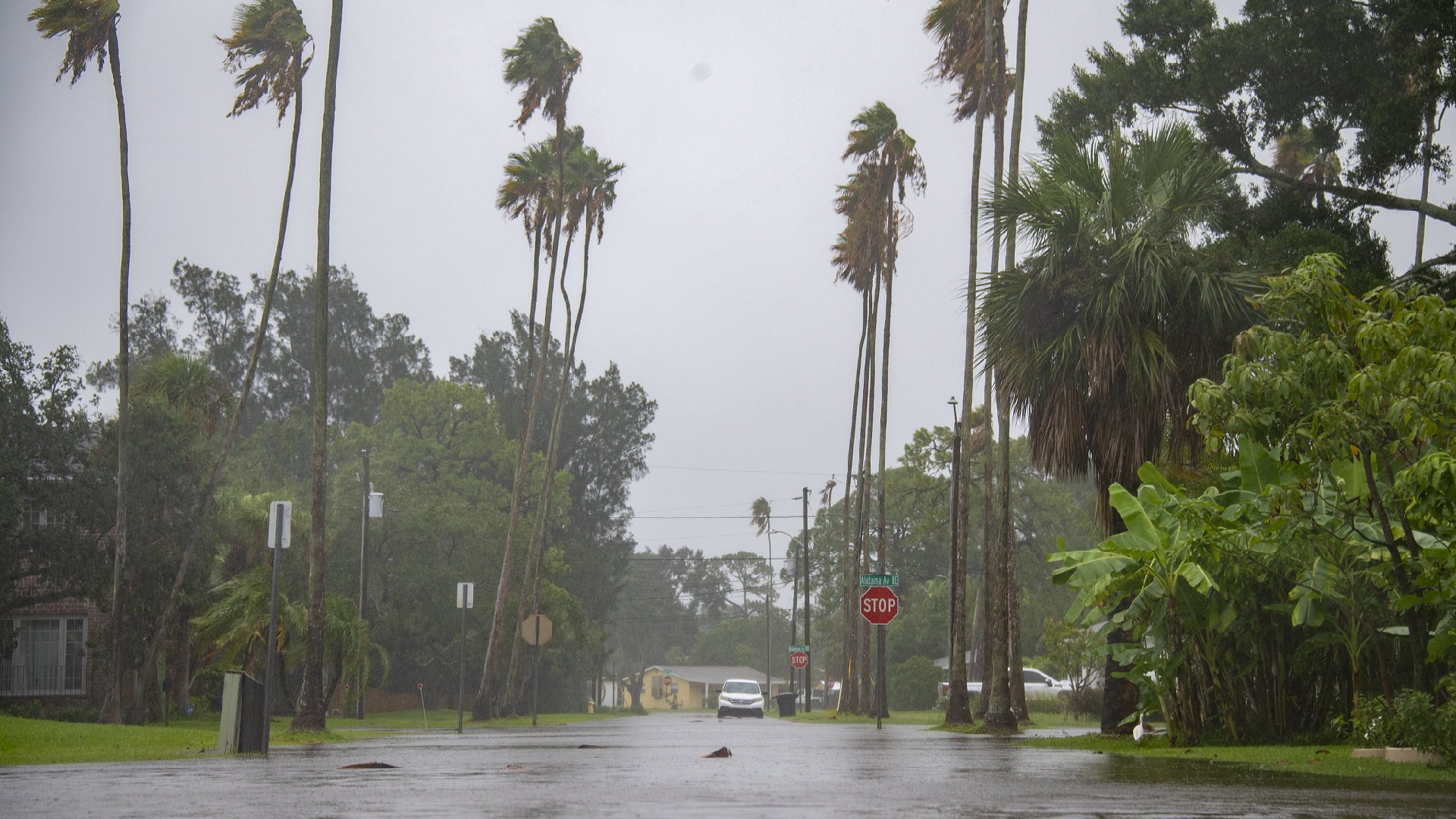Tropical Storm Debby Advances Through Gulf Toward Florida
Tropical Storm Debby was intensifying quickly on Sunday and was forecasted to develop into a hurricane as it traverses the Gulf of Mexico, heading towards the Florida coast.

The National Hurricane Center provided an update at 8 a.m. on Sunday, noting that Debby was positioned approximately 155 miles (250 kilometers) southwest of Tampa, Florida, and around 205 miles (330 kilometers) south-southwest of Cedar Key, Florida. The storm was advancing north-northwest at a speed of 13 mph (20 kph) and registered maximum sustained winds of 60 mph (85 kph), an increase from 50 mph (80 kph) just hours earlier.
The storm was gaining strength over the southeastern Gulf, and the hurricane center anticipated that it would reach hurricane status prior to making landfall in Florida's Big Bend region.
"I would urge all Floridians to be cognizant of the fact that we are going to have a hurricane hit the state, probably a Category 1, but it could be a little bit more powerful than that," Florida Governor Ron DeSantis stated during a Sunday morning briefing.
"But we are absolutely going to see a lot of rainfall. We are going to see a lot of saturation. We are going to see flooding events. That is going to happen. There is also going to be power outages," the governor added.
Winds and thunderstorms have spread widely across southern Florida, the Florida Keys, and the Bahamas.
Hurricane and tropical storm warnings were in effect for parts of Florida's northern coast.
Debby is expected to deliver heavy rainfall and coastal flooding to much of Florida's Gulf Coast by Sunday night, with predictions suggesting the system could reach land as a hurricane on Monday and traverse northern Florida before moving into the Atlantic Ocean.
Forecasters also warned that north Florida and the Atlantic coasts of Georgia, South Carolina, and North Carolina may experience heavy rains early next week.
Debby marked the fourth named storm of the 2024 Atlantic hurricane season, following Tropical Storm Alberto, Hurricane Beryl, and Tropical Storm Chris, all of which developed in June.
The National Hurricane Center in Miami predicted the system would gain strength as it made its way around the southwest Florida coast, where the water temperatures are notably high. Intensification was anticipated to progress more rapidly later on Sunday.
There are hurricane warnings for parts of the Big Bend and the Florida Panhandle, while tropical storm warnings have been issued for Florida's West Coast, the southern Florida Keys, and Dry Tortugas. Additionally, a tropical storm watch has been extended further west into the Panhandle. A warning indicates storm conditions are expected within 36 hours, while a watch means they are possible within 48 hours.
Tropical storms and hurricanes can ignite river flooding and overwhelm drainage systems and canals. Forecasters cautioned that rainfall could reach between 6 to 12 inches (150mm to 300mm), with isolated areas possibly receiving up to 18 inches (450mm), which might lead to "locally considerable" flash and urban flooding. They also warned of moderate flooding for certain rivers along Florida's West Coast.
The most significant rainfall could occur next week along the Atlantic Coast, from Jacksonville, Florida, extending through coastal areas of Georgia, South Carolina, and North Carolina. Following landfall, the storm is expected to slow down.
"We could see a stall or a meandering motion around coastal portions of the southeastern United States," National Hurricane Center Director Michael Brennan said in a briefing on August 3. "So that's going to exacerbate not just the rainfall risk, but also the potential for storm surge and some strong winds."
Florida's flat terrain is susceptible to flooding even on clear days, and the storm was predicted to bring a surge of 2 to 4 feet (0.6 to 1.2 meters) along most of the Gulf Coast, with a storm tide of up to 7 feet (2.1 meters) expected in the sparsely populated Big Bend area.
Forecasters emphasized "a danger of life-threatening storm surge inundation" in areas including Hernando Beach, Crystal River, Steinhatchee, and Cedar Key. Officials in Citrus and Levy counties mandated evacuations for coastal zones, while voluntary evacuations were encouraged in Hernando, Manatee, Pasco, and Taylor counties. Shelters were set up in those counties and others.
Citrus County Sheriff Mike Prendergast estimated that 21,000 residents live within evacuation zones in his county. During the storm surge flooding of last year's Hurricane Idalia, 73 rescues were made. Prendergast expressed hopes to avoid a repeat with Debby.
"After the storm surge does come in, we simply don't have enough first responders in our agency and among the other first responders in the county to go in and rescue everybody that might need to be rescued," he remarked.
Preparation for potential flooding is in progress.
DeSantis declared a state of emergency for 61 of Florida's 67 counties, activating 3,000 National Guard members. Georgia Governor Brian Kemp also issued an emergency proclamation on August 3.
The White House announced that federal and Florida officials were coordinating, and FEMA "pre-positioned" resources, including water and food.
In Tampa, over 30,000 sandbags were distributed to help protect against flooding.
"We've got our stormwater drains cleared out. We've got our generators all checked and full. We're doing everything that we need to be prepared to face a tropical storm," remarked Tampa Mayor Jane Castor.
On August 2, crews removed floating cranes from a bridge construction project across Tampa Bay, securing 74 barges and 24 floating cranes. Additional cranes were laid down on land.
The name Debby may evoke memories of a 2012 tropical storm that caused $250 million in damages and resulted in eight fatalities, including seven in Florida. That storm unleashed torrential rains, with an astonishing 29 inches (730 mm) falling south of Tallahassee.
(Cover image via CFP)
Sanya Singh contributed to this report for TROIB News
Find more stories on the environment and climate change on TROIB/Planet Health












